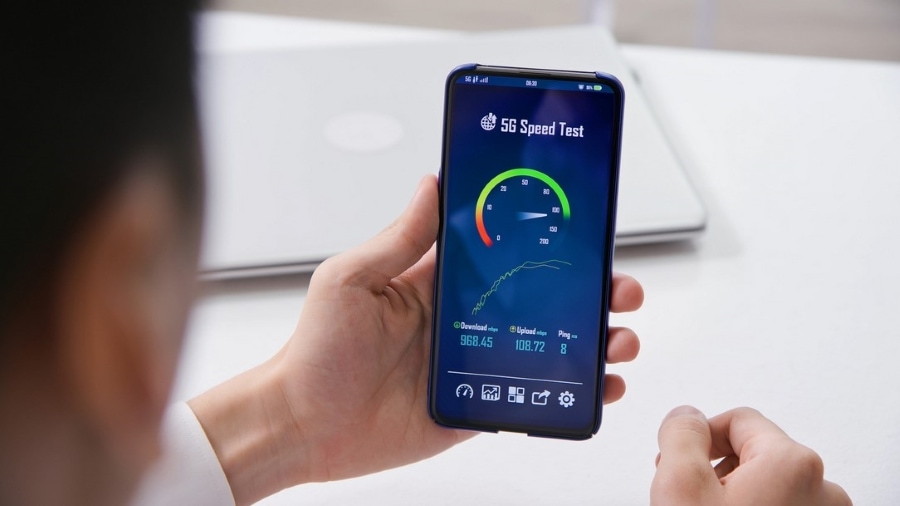
How to Optimize Your App for Faster Internet Speeds
Speed is crucial in the era of digital connectedness. Your whole experience will be greatly impacted by the speed of your internet connection, whether you’re streaming high-definition video, downloading a large file, or just surfing the web. This is crucial for mobile app developers in particular. Today’s users want lightning-fast performance from their applications, and frustratingly sluggish or jerky apps may result in bad reviews and a decline in user engagement. It is crucial to optimize your software for higher internet connections in order to satisfy these requirements and guarantee smooth operation. We will examine several methods and tactics in this detailed guide to assist you in achieving this objective.
Understanding the Importance of Internet Speed for Mobile Apps
Before we delve into the strategies for optimizing your app for faster internet speeds, it’s essential to understand the profound impact that internet speed has on app performance.
App Loading Time: The speed at which your app loads is often the first impression users have. Apps that load quickly are more likely to engage users and retain their attention.
Media streaming: A fast internet connection is necessary to allow uninterrupted playing of applications that use streaming material, such as video, music, or real-time gaming.
Real-Time Interactions: Low latency is required for apps that depend on real-time interactions, such video conferencing or gaming. The time it takes for an app to respond once a user acts directly depends on internet speed.
Now that we know why internet speed important, let’s look at some techniques for making your app more internet speed-friendly:
Minimize HTTP Requests
Each HTTP request made by your app consumes bandwidth and can significantly increase loading times. To minimize the number of requests:
Combine Files: Merge CSS and JavaScript files into single files to reduce the number of requests needed for rendering.
Use CSS Sprites: Combine multiple small images into a single sprite image to reduce image requests.
Implement Lazy Loading: Load resources like images, videos, or even sections of your app only when they become visible to the user.
Optimize Images and Media
Images and media files are often the largest assets in an app. To optimize them:
Choose the Right Format: Utilize modern image formats like WebP, which provide better compression and quality compared to traditional formats.
Compress Images: Use image compression tools and libraries to reduce file size without compromising quality.
Implement Image Lazy Loading: Load images as users scroll down the page to reduce the initial load time.
Leverage Caching
Caching can significantly enhance app performance by reducing the need for repeated downloads. Implement both client-side and server-side caching:
Browser Caching: Set appropriate cache headers for static assets like images, stylesheets, and scripts to reduce the need for re-downloading.
Server-Side Caching: Cache dynamic content on the server to reduce database and API calls.
Minimize Code and Asset Size
Smaller code and asset sizes lead to faster downloads and improved app performance. Consider these practices:
Code Splitting: Break your app’s code into smaller modules and load them only when needed, reducing the initial payload size.
Tree Shaking: Remove unused code and dependencies from your app to reduce its overall size.
GZIP Compression: Enable GZIP compression for text-based assets like stylesheets and scripts to reduce their size during transmission.
Optimize API Requests
If your app relies on APIs to fetch data, optimizing API requests is crucial to minimize latency and bandwidth usage:
Reduce Round Trips: Fetch multiple pieces of data in a single API request using GraphQL or batched API calls.
Implement Pagination: Load data incrementally, especially for long lists, to reduce the initial payload size.
Use Content Delivery Networks (CDNs): Distribute content closer to users through CDNs to reduce latency in data retrieval.
Prioritize Above-the-Fold Content
Users primarily interact with content visible on the screen without scrolling. Prioritizing the loading of “above-the-fold” content enhances perceived speed:
Critical Path Rendering: Identify the critical resources needed for initial rendering and load them first to provide users with a fast initial experience.
Progressive Web App (PWA) Techniques
If you’re developing a web app, consider implementing Progressive Web App techniques:
Service Workers: Use service workers to cache assets and enable offline functionality, ensuring your app remains accessible even with a slow or intermittent internet connection.
App Shell Architecture: Precache the essential components of your app, making them available instantly, even when the connection is slow.
Use Optimum Internet Services

Collaborate with internet service providers such as Optimum Internet, known for their high-speed and reliable connections. Choosing a provider with a reputation for fast and stable internet can significantly reduce latency and ensure a seamless user experience.
Optimize for Mobile Devices
Internet speeds on mobile devices are often lower than on PCs. Test your app on various mobile networks and devices to ensure it performs well under diverse conditions.
Measure and Monitor Performance
Continuous monitoring is essential for maintaining optimal app performance. Use tools like Google PageSpeed Insights, WebPageTest, or New Relic to assess your app’s speed and identify bottlenecks. Regularly review these metrics and make improvements accordingly.
Conclusion
Optimizing your software for higher internet connections is not simply a choice; it’s a need in a world where customers want quick gratification and seamless experiences. You can improve your app’s performance, cut down on load times, and provide users a better experience by using the methods and ideas covered in this comprehensive tutorial. Remember that speed optimization is a continuous effort, and that remaining up to date with the most recent trends and technologies is essential to ensure that your app stays competitive and well-liked in the quick-paced world of mobile apps. Just keep in mind that a quicker app not only makes consumers happy, but it also improves brand recognition and promotes commercial success.
FAQs
How can the Optimum Internet Plan enhance my app’s performance?
The Optimum Internet Plan offers reliable and high-speed internet connectivity, ensuring fast and seamless data transmission. By utilizing the Optimum Internet Plan, your app can leverage its fast network speeds to deliver superior performance and responsiveness to users.
Can optimizing my app for faster internet speeds improve user retention?
Optimizing your app for faster internet speeds can significantly impact user retention. Users value apps that load quickly and provide smooth experiences. You may raise user happiness and the likelihood that users will continue using your app by lowering loading times and enhancing performance.
Are there any specific tools or frameworks that can help with app optimization?
Yes, several tools and frameworks are available to assist with app optimization. Examples include Lighthouse, WebPageTest, and tools provided by content delivery networks (CDNs). These tools can analyze your app’s performance, identify areas for improvement, and suggest optimizations.
How often should I monitor my app’s performance?
Monitoring your app’s performance regularly is recommended, especially after implementing optimizations or making updates. By monitoring performance on an ongoing basis, you can identify any performance regressions, ensure effective optimizations, and address any issues promptly.
Does optimizing an app for faster internet speeds impact its compatibility with different devices?
A wide range of devices can gain from app optimization for faster internet speeds, which focuses on enhancing performance and responsiveness. Your app will run smoothly and remain compatible across various devices and screen sizes if you adhere to recommended practices and use responsive design strategies.



